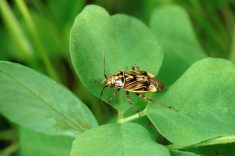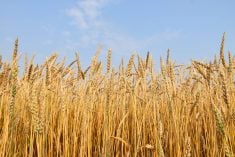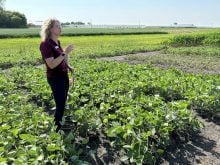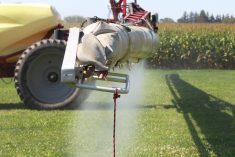New study determines malting barley can exceed the maximum residue limit even when application followed the label
A new study found the maximum residue limit for glyphosate in malt barley was exceeded, even though it was applied according to label requirements.
“When the application was done at the recommended time and rate, so 900 grams ae (acid equivalent) per hectare at the hard dough stage, we had occurrences with residue above the MRL. On-label applications above MRL residues. What is going on there?” said Agriculture Canada research scientist Breanne Tidemann.
Rates of acid-based herbicides are expressed as acid equivalents per unit area to standardize results of different formulations.
Read Also
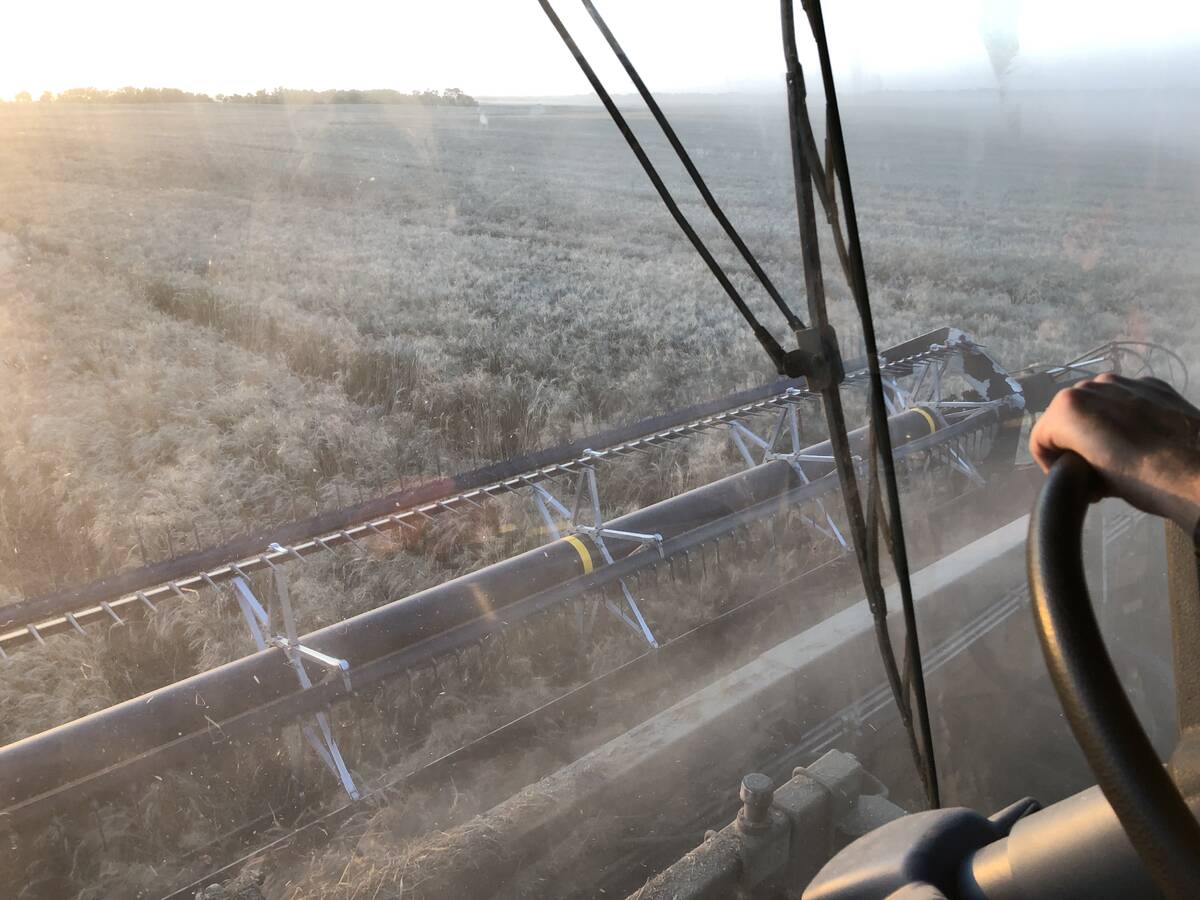
Mail strike disrupts grain sample delivery
The Canadian Grain Commission has asked farmers to consider delivering harvest samples directly to CGC offices, services centres or approved drop offs as Canada Post strike delays mail.
Tidemann presented malt barley research during the Top Crop Summit in Saskatoon on Feb. 23, including the yet to be published study that examined how pre-harvest glyphosate applications affect the quality of malt barley.
Two malt barley varieties, AC Metcalf and CDC Meredith were tested over four years in Alberta at Beaverlodge, Lacombe and Lethbridge, as well as Scott, Sask.
Three treatments were evaluated including a check with no preharvest application, a treatment of 900 grams ae per hectare of glyphosate, and 1,125 grams ae per hectare of glyphosate.
The registered rate for preharvest glyphosate on barley is 900 grams ae per hectare and less than 30 percent moisture of the crop.
Applications were made at the soft dough stage (35 to 40 percent moisture), at hard dough (25 to 30 percent moisture), and at maturity (20 percent moisture or less) of the malt barley.
“When we assess hard dough in the field, we’re assessing less than 30 percent moisture in the field. Typically, we’re using the fingernail test, when your fingernail depression stays in the seed,” Tidemann said.
“When we were making our application decisions in the field we did the same thing. We looked at the fingernail test. We also picked heads and measured actual moisture of those heads for when we were doing those applications.”
The barley assessed in the hard dough stage had an average moisture content between 25 and 30 percent moisture.
But even though the average was under the 30 percent moisture, a label requirement for glyphosate, there was a range of moisture measured in the barley.
AC Metcalf was between 11 and 50 percent moisture. CDC Meredith was between 14 and 43 percent.
“The four techs that I work with have between 25 and 36 years’ experience. They know how to do a hard dough fingernail test, and yet we still saw these ranges of moisture,” Tidemann said.
“I’m concerned about that difference in moisture at that fingernail test timing if that correlation is not as strong as we think it is to the percent moisture in the seed; if we’re just going off that fingernail test, we could be resulting in residues above that MRL level.”
The same fingernail test is commonly used to assess moisture for wheat, oats and barley before pre-harvest glyphosate applications.
Tidemann said there were detectable, quantifiable residues of glyphosate on the malt barley at both rates and at all three timings.
“Application of glyphosate on malt barley, what we’re seeing here is risk. There is risk associated with this in terms of MRLs, in terms of residues. There is also some risk in terms of yield,” Tidemann said.
“Even if you’re following the label, we’re at risk.”
She said farmers who think they can get away with it, should consider what they are putting at risk. If residues above MRLs are discovered, the malt barley could be rejected and it could turn into a complicated trade issue.
“And is the benefit that we’re seeing from that glyphosate application really that big, is it worth the trade risk?”
Krista Zuzak, director of Crop Protection and Production at Cereals Canada, who leads the cereals MRL assessment committee, said farmers should not apply glyphosate on malt barley.
“The malt barley industry, they’re essentially not looking for barley that has been treated with glyphosate. With everyone sitting down at the table, the recommendation has been not to apply glyphosate to malt barley. Even though it’s a registered use, it’s not something that would be recommended from an industry standpoint,” Zuzak said.
Cereals Canada’s Keep It Clean initiative produces a product advisory sheet, that says a pre-harvest glyphosate application should not be performed on malt barley, but that regular barely grown for food or feed can receive this treatment.
In Canada, MRLs are set by Health Canada and Zuzak said they are not a measure of health and safety, but rather are used to facilitate trade.
“An MRL, that would be the maximum amount of pesticide that you would expect to remain on a crop when it’s used according to label directions in Canada. There are always factors, environmental and whatnot that can impact what kind of residues you see on grain,” Zuzak said.
Environmental issues including low spots on fields that are slower to mature, or tillers that start off later than the bulk of the crop may have a higher moisture content when the crop is sprayed and can retain glyphosate above MRL levels.
This is why growers are encouraged to do their moisture testing where the crop is the least developed, including the tillers.
In Canada, the MRL for glyphosate on barley is 10 parts per million. High quality Canadian grain that consistently meets specifications can get a premium on international markets because of this.
When MRLs are surpassed in exported grain, it can cause trade concerns but it doesn’t automatically cause a shipment to be sent back to Canada.
“The other countries will often conduct a risk assessment to see if the crop with the MRL exceedance is an issue or not,” Zuzak said.
“When we look at MRLs, they’re often set 100 times or more below levels that would have an impact on human health. So, I would say from the health concern standpoint, this is less of a concern.”
Pre-harvest glyphosate and malt barley yield
Glyphosate application in the soft dough stage, of both 900 and 1,125 grams of active, caused barley yields to fall significantly when applied during the soft dough stage.
“That’s expected, that’s off label. Those kernels are still filling, and we expected reductions in yield at that application timing. What we didn’t expect to see was that yield was actually highest in the maturity application, which is later than most producers would typically apply. There was actually a benefit to waiting to apply that glyphosate,” said AAFC’s Breanne Tidemann.
She said there was an 11 bushel per acre yield difference between plots with glyphosate applied during soft dough to those that were sprayed when the crop was mature.
The hard dough treatment yielded only a couple bushels per acre less than the check that wasn’t sprayed.
“It’s not a huge impact on yield to do the on-label applications, but you’re actually better off to wait a little longer than go right as soon as you can on label,” Tidemann said.
The percent of plump barley kernels fell by a couple of percent in all treatments with glyphosate, regard- less of time and rate.






